World Heritage Sites
-
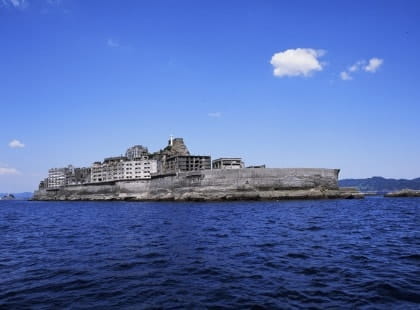
-
Sites of Japan’s Meiji Industrial Revolution
When Japan opened its ports in the 1850’s Nagasaki became a city of industrial and economic prosperity thanks to a handful of foreign entrepreneurs. Thomas Glover played the role of a catalyst in connecting Japanese samurai with Western technology. Locations showcasing the landmark advancements during this period are recognized as World Heritage Sites since 2015. There are a total of 23 Industrial Heritage Sites in Japan across 11 cities, 8 of which are in Nagasaki city.
Kosuge Slip Dock
-
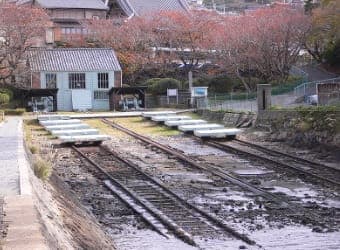
-
Thomas Glover and members of the Satsuma Clan imported this dock from Scotland and completed construction in 1869. This was the first joint venture between the Japanese and a foreigner, and the oldest existing brick building in Japan. It is a Western style slip dock which has Japan’s oldest steam engine. It was built in order to repair foreign ships that were being purchased by the Japanese at that time.
Address 5 Kosugemachi, Nagasaki-shi, Nagasaki-ken 850-0934 (Google Map)
Mitsubishi No.3 Dry Dock (Not open to the public)
-
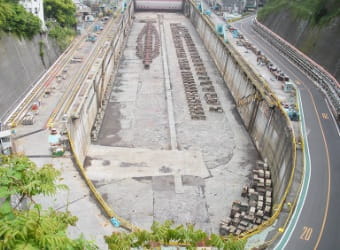
-
After 5 years of difficult construction work, cutting back the cliffs and reclaiming the ocean, No. 3 Dock was completed in and was the largest dock in Asia at that time. The facility is still in operation today after more than 100 years since it opened.
Address 1-1 Iwasedōmachi, Nagasaki-shi, Nagasaki-ken 850-0072 (Google Map)
Mitsubishi Former Pattern Shop
-
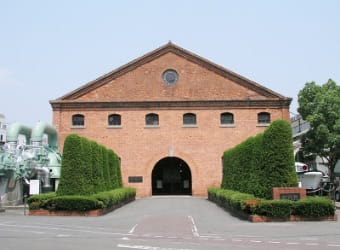
-
This site was originally a pattern shop for machinery; it is the oldest factory building in the shipyard. It became a historical museum in October 1985 displaying the role of Nagasaki Shipyard in the modernization of Japan.
It showcases over 900 pieces of historical materials such as items and photographs that describe the progress of technology from 1857 to the present.There is a shuttle service from Nagasaki Station. Reservation required.
(Google Map)
Mitsubishi Giant Cantilever Crane (Not open to the public)
-
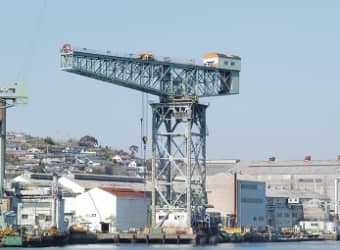
-
Towering in the center of Nagasaki Harbor this was the first electric crane of it’s type in Japan, imported from Scotland in 1909. It is the oldest surviving one in operation in the world and still has a lifting capacity of 150tons, driven by an electric motor.
Address 1-1 Akunouramachi, Nagasaki-shi, Nagasaki-ken 850-0063 (Google Map)
Mitsubishi Senshokaku Guest House (Not open to the public)
-
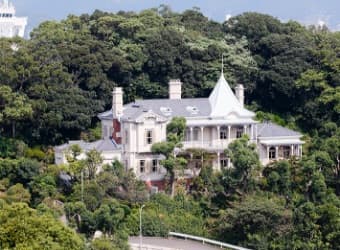
-
This guesthouse was originally designed as a residence of the Shipyard’s Director, and was designed by Tatsuzo Sone, who was taught by Josiah Conder at the Imperial College of Engineering. Since its completion in 1904 it has been used as a guesthouse in which to entertain important clients to the shipyard. It is a Western-style wooden two-story building with a bedroom / hall on the second floor, a dining room, a reception room, a study in the first floor, and a kitchen is equipped in the basement.
Address 1-1 Iwasedōmachi, Nagasaki-shi, Nagasaki-ken 850-0072 (Google Map)
Hashima Coal Mine (Battleship Island)
-
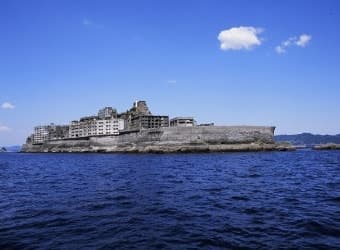
-
Hashima coal mining island is an artificial reclaimed island and the site of Japans first major coal exploitation. It got the name battleship island because its tightly packed high rise reinforced concrete buildings giving the island the appearance of a warship. The operations were closed and the island was deserted in 1974 due to a shift from using coal to oil for energy. In 2009 the island was reopened for commercial tourism, allowing a peek into the lives of people at that time.
Address Takashima, Nagasaki city, Nagasaki (Google Map)
Takashima Coal Mine
-
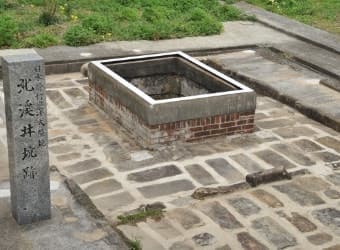
-
This coal mine was developed from 1869. It was Japan’s first modern coal mine, using Western steam engine technology, through a joint venture with Thomas Glover and later, in 1881, purchased by Mitsubishi. The Hokkei Pit on Takashima Island is located 14.5 km offshore from Nagasaki Harbor.
Address 99-1 Takashima-machi, Nagasaki city, Nagasaki (Google Map)
Glover House
-
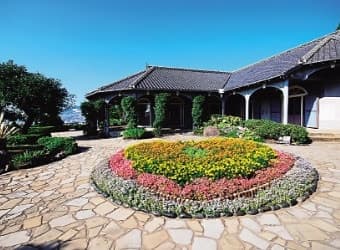
-
Scottish born Thomas Blake Glove came to Nagasaki via Shanghai in 1859 at the age of 21. Just three years later, he established the company Glover & Co. and played a major role in the industrial revolution in Japan. He brought in new technologies such as shipbuilding, coalmines, and railroads, and supported the Satsuma Clan. Glover house is the oldest wooden Western style house in Japan completed in 1863.
Address 8-1 Minami-Yamatemachi, Nagasaki City, Nagasaki Prefecture (Google Map) Web site http://www.glover-garden.jp/english
-
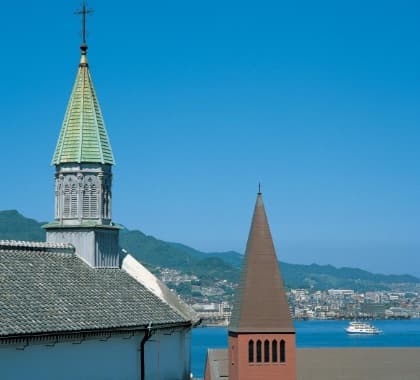
-
Hidden Christian Sites in the Nagasaki Region
In 2018, “Churches and Christian Sites in Nagasaki” were officially registered as UNESCO ’s World Cultural Heritage. This heritage is made up of 12 sites that tell the story of “hidden Christians” who secretly continued their faith in Nagasaki and Amakusa during the 17th - 19th century prohibition of Christianity in Japan.
1. Beginning
2. Formation
3. Maintenance Expansion
4. Transformation · end
Please contact in advance to visit the church.
http://kyoukaigun.jp/en/
Oura Cathedral
-
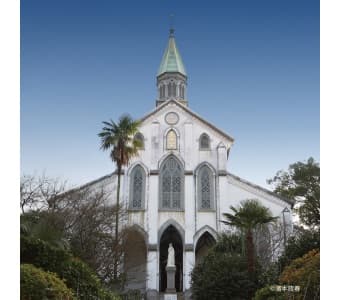
-
Oura Cathedral is the oldest surviving wooden church of gothic architecture in Japan. It was built in 1864 by the French missionary, Father Petitjean. The church was dedicated to the 26 martyrs who had been executed on Nishizaka Hill 200 years before. It has been designated as a national treasure. One important story of this church is the “Discovery of the Flock”where hidden Christians came to the cathedral revealed their faith. The Pope at the time was moved by how the Christian faith had survived centuries of harsh persecution, and declared it to be the “Miracle in the East”. Pope John Paul II visited this site in 1981.
Address 5-3 Minamiyamatemachi (Google Map) Web site http://kirishitan.jp/en
Shitsu Village in Sotome
-
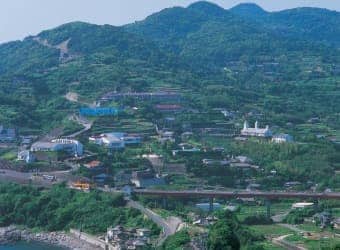
-
The Shitsu Village in Sotome is a settlement where hidden Christians secretly practiced their faith, performing baptisms, worshipping sacred images, studying the doctrines, and observing Christian events. The Hollywood movie “Silence” (directed by Martin Scorsese) was set here. In 1882, Father de Rotz who was a missionary from Paris built “Azu Church Hall” on a hill overlooking the village. A statue of the Virgin Mary that was ordered from France still stands on the bell tower.
Shitsu Church : Reservation required.
https://kyoukaigun.jp/en/Address Nagasaki City, 2633 Nishishitsumachi (Google Map) Access About 1hour 10mins by Nagasaki Bus Web site http://kirishitan.jp/en
Ono Village in Sotome
-
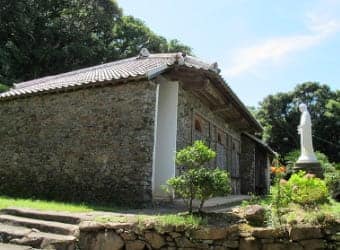
-
Ono village in Sotome is located on a steep hillside overlooking the East China Sea. Since it was too far from Shitsu, the hidden Christians in that area built their own church to practice their faith. Ono church is a small church, Father de Rotz, who arrived in the area in 1893, and 26 followers completed the work together. It includes a Christian cemetery.
Address Nagsaki city, 2619 Ono-machi (Google Map) Web site http://kirishitan.jp/en